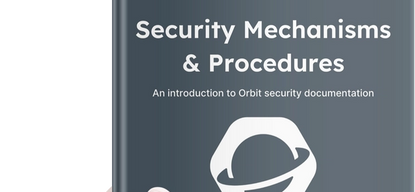Post From Development
A deep dive into the performance strategy of Orbit
This is how we strategically enhance the performance for the Orbit platform.
Kaare Hoff Skovgaard
Performance in the world of IT systems isn't just about raw speed, but about trust.
When a platform consistently performs well, users come to rely on it. They trust it with their daily tasks, confident it won't let them down in crucial moments. At Orbit, we value this trust as a bond between us and our users. It's our duty to ensure that every interaction, whether it's a simple command or a complex operation, meets our user's expectations. This consistent reliability not only boosts user satisfaction but cements our reputation as a dependable software solution.
For Orbit, system performance can influence how new users perceive and engage with it. A high-performing system is more likely to achieve widespread adoption within a new organisation.
“The performance goals of Orbit are straightforward: simple actions should conclude quickly enough that no user feels like they are waiting on the system.”
In this post, I will explain how we strategically enhance the performance for the Orbit platform.
Prioritising is key
As a developer, I juggle cool new features, bug fixes, UX, streamlined architecture, and performance improvements – this can indeed become a circus of prioritising the diverse interests of stakeholders. We generally prioritise developments that enrich our users' daily experience on the platform.
To guarantee stable and acceptable performance levels, particularly when implementing new functions, we have a set of fundamental guidelines that all developers adhere to:
- Reuse existing architecture to build new features.
- Evaluate whether altering of existing code radically conflicts with its intended purpose, and if so what performance consequences that can have.
- "Clean up", ensure code remains maintainable.
- Evaluate the consequences of a bug fix.
- Test on large amounts of data.
By adhering to these guidelines, we are better suited to maintain the code and avoid poor performance creeping its way into the underlying architecture of Orbit.
How does this strategy influence user experience?
Firstly, our users enjoy a swift experience when navigating our solution and performing their tasks.
Secondly, it’s much more efficient for us to maintain. This enables us to devote more time to developing new features and addressing bug fixes, thereby delivering heightened tangible value to our users.
In essence, we simplify the process for both our users and the development team.
You might also like
More technical blogposts

posts from development•blogposts
A shift in hosting strategy - Orbit Online
We don’t know what will happen next with regards to data agreements between Europe and the USA, which is why we needed a long-term solution to our hosting issues. A solution that we know will protect our clients’ sensitive data.


